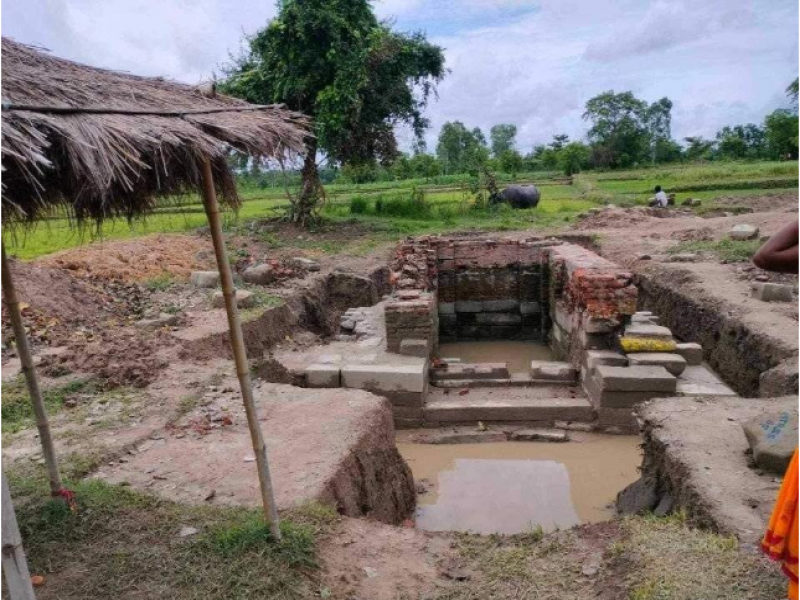Archaeologists have discovered remnants from the eighth-century Lichchhavi era during an excavation at the historic Janakkali Matheshwarnath temple in Sabaila municipality-6 Govindapur, Dhanusha district.
A three-member team, including Prakash Darnal from the Department of Archeology, began the excavation on June 21. Darnal reported that the team found various relics from the ancient temple, including an iron clip connecting two stone slabs, a round iron ring, temple surfaces, and ancient Indian and Nepali coins. Notably, they also discovered stone inscriptions with letters in the Lichchhavi script, which helped establish the temple’s antiquity.
“These findings suggest the presence of an ancient temple, and we are working to verify this by consulting experts who can accurately date the inscriptions,” Darnal said.
Local resident Rambriksha Yadav, 60, shared that the Matheshwarnath temple, currently being excavated, is referenced in the religious text Ramayana. Ram Manohar Sah, 75, added that the temple was constructed by King Janak of Mithila, who built four monasteries around Janakpurdham. These include Jaleswarnath in Mahottari, Kshireshwarnath in Dhanusha, Matheshwarnath in Govindpur, and Kalyaneshwar in Bihar, India. While the other three temples are still worshiped today, only the ruins of Matheshwarnath remain.
During the excavation, the team also uncovered a unique geometrical pattern, or ‘butta,’ which has not been seen elsewhere. Darnal emphasized that while the evidence points to the site being the Matheshwarnath temple, further studies are required to confirm this.
The discoveries at the Matheshwarnath temple site provide valuable insights into the region’s rich historical and cultural heritage, shedding light on the architectural and religious practices of the Lichchhavi period.






